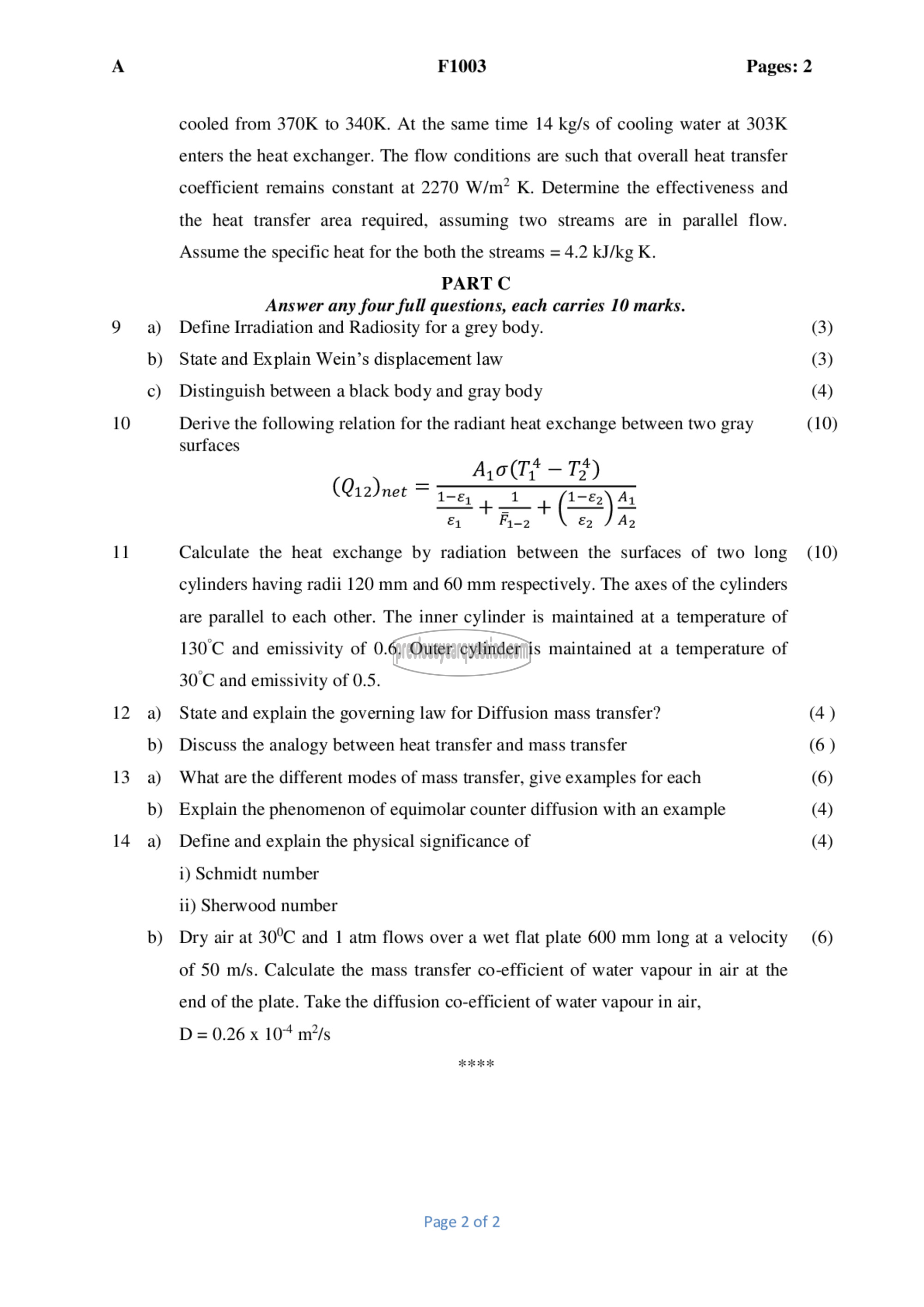APJ ABDUL KALAM TECHNOLOGICAL UNIVERSITY Previous Years Question Paper & Answer
Semester : SEMESTER 6
Subject : Heat & Mass Transfer
Year : 2019
Term : MAY
Branch : MECHANICAL ENGINEERING
Scheme : 2015 Full Time
Course Code : ME 302
Page:2
10
11
12
13
14
b)
௦)
a)
b)
a)
b)
a)
b)
F1003
Pages: 2
cooled from 370K to 340K. At the same time 14 kg/s of cooling water at 303K
enters the heat exchanger. The flow conditions are such that overall heat transfer
coefficient remains constant at 2270 W/m? K. Determine the effectiveness and
the heat transfer area required, assuming two streams are in parallel flow.
Assume the specific heat for the both the streams = 4.2 kJ/kg K.
PART C
Answer any four full questions, each carries 10 marks.
Define Irradiation and Radiosity for a grey body. (3)
State and Explain Wein’s displacement law (3)
Distinguish between a black body and gray body (4)
Derive the following relation for the radiant heat exchange between two gray (10)
surfaces
46 (1 − 12)
(Qi2)net = 1-௪)
6
1
1-2
+(
1-€2
62
۱
41
42
Calculate the heat exchange by radiation between the surfaces of two long (10)
cylinders having radii 120 mm and 60 mm respectively. The axes of the cylinders
are parallel to each other. The inner cylinder is maintained at a temperature of
130°C and emissivity of 0.6. Outer cylinder is maintained at a temperature of
30 C and emissivity of 0.5.
State and explain the governing law for Diffusion mass transfer?
Discuss the analogy between heat transfer and mass transfer
What are the different modes of mass transfer, give examples for each
Explain the phenomenon of equimolar counter diffusion with an example
Define and explain the physical significance of
i) Schmidt number
ii) Sherwood number
(4)
(6)
(6)
(4)
(4)
Dry air at 30°C and 1 atm flows over a wet flat plate 600 mm long at a velocity (6)
of 50 m/s. Calculate the mass transfer co-efficient of water vapour in air at the
end of the plate. Take the diffusion co-efficient of water vapour in air,
ற = 0.26 x 104 وم
Page 2 of 2
